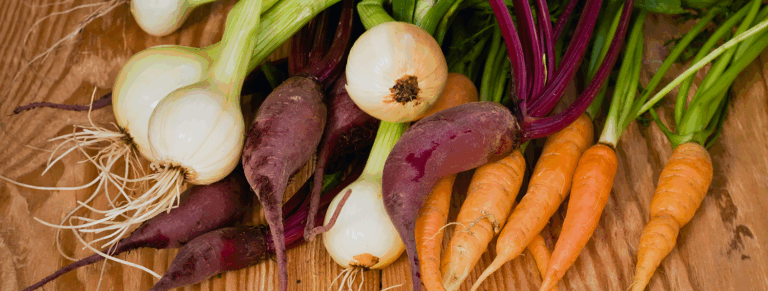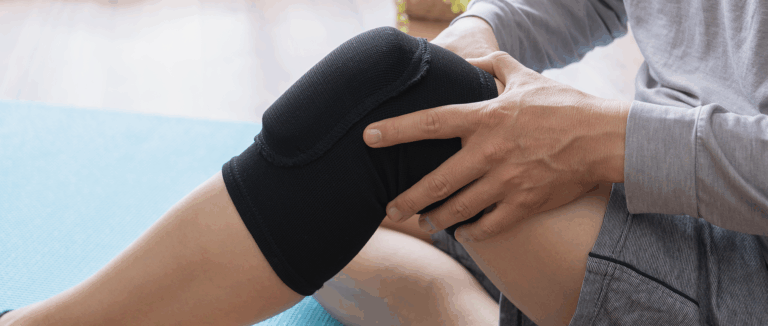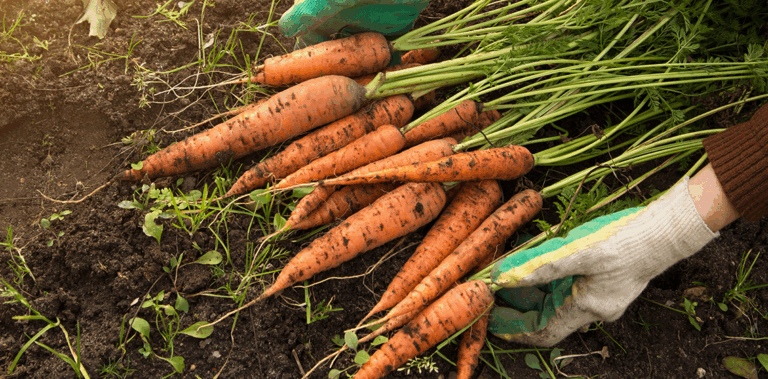Physical Activity, Stress, and Gut Health
Physical Activity, Stress, and Gut Health
Exercise and gut conditions have long been connected, and an estimated 20 to 50 percent of athletes suffer from gastrointestinal (GI) symptoms.1,2 In general, there is a high prevalence of GI complaints specifically among people who participate in moderate to high levels of physical activity.
Clinically speaking, both gut health and physical activity are foundational starting points toward healing and can benefit health in a myriad of ways. However, the physiology of stress is inextricably connected to physical activity, and a maladaptive stress response during exercise can be responsible for undesirable symptoms that manifest within the GI tract.
The importance of both gut health and physical activity in a wholistic treatment protocol cannot be overstated. Supporting a healthy gut microbiome and improving the body’s ability to regain homeostasis and adapt to stress during exercise can be of vital importance in reducing uncomfortable GI symptoms as well as achieving optimal levels of both mental and physical health. The role of adaptogenic herbs, key nutritional factors, and promoting gut microbiota diversity are all important considerations to improve digestive health, physical performance, and reduce exercise-induced symptoms that can result from stress.
How Stress Affects Exercise and Gut Health
Stress during exercise activates the sympathoadrenomedullary (SAM) and hypothalamus-pituitary-adrenal (HPA) axes. Activation of these axes results in the release of catecholamines, such as norepinephrine and epinephrine, and glucocorticoids into the circulatory system. Autonomic nervous system (ANS) activation also stimulates the release of hormones and neurotransmitters within the GI tract, hormones like gamma aminobutyric acid (GABA), neuropeptide Y (NPY), and dopamine.1,2 This results in bidirectional communication between the ANS and the enteric nervous system (ENS) (i.e. the gut-brain axis) and occurs mainly via the vagus nerve, which regulates nearly every aspect of the digestive process.3
Emerging research indicates that changes in mood and GI function during exercise could reflect upon the underlying interaction between gut microbiota and the gut-brain axis during times of physical stress.4 A developing understanding of how the microbiome regulates the exercise-induced stress response has revealed unique microbiota-host interactions vital to both GI and systemic health:
- Moderate exercise can increase GABA levels and play a role in various GI functions such as motility and gastric emptying.5
- NPY is released during intense exercise and plays a role in dampening stress through the HPA axis and inflammatory processes.6,7
- Dopamine receptors can be found throughout the intestines and can be synthesized in the GI tract during times of stress.8
- Gut microbiota metabolites such as short chain fatty acids (SCFA) are also involved in gut-brain axis communication, and gut microbiota can modulate neurotransmitters such as serotonin, GABA, and dopamine in response to stress. 9-12
- Gut microorganisms can regulate the HPA axis through the synthesis of hormones and neurotransmitters that interact directly with stress hormones in the mucosal layer of the GI tract.13
Adequate intestinal barrier function is crucial for maintaining immune and overall health, and the connection between stress and intestinal permeability (or “leaky gut”) is well known. The effects that excessive release of stress hormones from exercise can have on the GI tract include:
- Loosening of tight junction protein structures, which can cause lipopolysaccharide (LPS) translocation outside of the GI tract and trigger immune and inflammatory responses that can result in increased intestinal permeability and endotoxemia.14,15
- Activation of the HPA axis, which can stimulate subepithelial mast cells to secrete immune mediators such as histamine, proteases, and pro-inflammatory cytokines.16
- Redistribution of blood flow away from the intestines causing damage to the intestinal mucosa and further intestinal barrier disruption.17
The Role of Microbiota During Exercise-induced Stress
The gut and the microbiota have important functions during exercise because they are responsible for the delivery of water, nutrients, hormones, and neurotransmitters, while also contributing to enteric immunity and the regulation of inflammation and oxidative stress.18 The main microorganisms that respond to exercise are Firmicutes and Actinobacteria, which contain the Lactobacillus and Bifidobacterium genera. Some of these will produce SCFA in response to exercise.19
In the lower intestine, polysaccharides from the diet are digested and subsequently fermented by Lactobacillus and Bifidobacterium into beneficial SCFAs which are used as energy sources.20 The microbiota-produced SCFAs affect a range of host processes including colonic pH, microbiota composition, intestinal motility, gut permeability, and epithelial cell proliferation.21 Studies have shown that exercise can not only affect SCFA production in the intestine, but can in turn affect the HPA axis, the health of the GI tract, and may potentially promote physical performance. A 2016 systematic review on endurance exercise suggested that gut microbiota have a key role in controlling oxidative stress and inflammatory responses, and it can also help improve body metabolism and energy expenditure during exercise.22
Diet, Probiotics, and the Microbiota
Dietary recommendations to optimize performance during exercise are well-known, but rarely is the health of the gut microbiota considered. In general, recommendations for exercise often encourage consumption of high amounts of simple carbohydrates and protein and low amounts of fat and fiber in order to provide a quick source of energy while attempting to avoid potential gas and distension, which high fiber diets can sometimes cause. However, insufficient consumption of fiber may promote a loss of microbial diversity in the GI tract.23 Growing research suggests that this may play a role in the development and function of an appropriate stress response.
Therefore, dietary and supplement recommendations aimed to reduce symptoms of exercise-induced stress by improving gut microbiota composition during exercise are of growing interest. For example, ensuring adequate intake of dietary fiber, plant-based foods, and synbiotics (a combination of probiotics and prebiotics that feed specific bacterial strains), helps to ensure one’s ability to feed commensal bacteria that produce beneficial by-products for host metabolism and homeostasis (e.g. SCFA and neurotransmitters), and inhibit bacterial production of potentially harmful metabolites.24 As the diet strongly influences microbiota composition and function, modulation of the gut microbiota via nutritional and herbal modifications may improve the stress response and physical performance.
- Carbohydrates: Diets high in simple and refined carbohydrates do not promote a healthy gut microbiota composition nor do they produce beneficial SCFA.25
- Protein: Increased requirements during exercise are associated with a fall in the plasma concentration of glutamine, and it has been hypothesized that this decrease could impair immune function and increase susceptibility to infection and leaky gut.26
- Fats and polyunsaturated fatty acids: Omega-3 polyunsaturated fatty acids may decrease the production of inflammatory eicosanoids, cytokines, and reactive oxygen species (ROS) during exercise.27
- Vitamins and antioxidants: Vitamins C and E, β-carotene, and polyphenols may help reduce ROS formation and lipid peroxidation during exercise.28
- Probiotics: Can help promote healthy digestive function, reduce inflammation and intestinal permeability, and be of particular importance in those who experience GI symptoms in relation to exercise and stress by positively modifying the gut microbiota.29.30 Currently, Bifidobacterium strains have generated the best results.31
- Herbal Adaptogens: Plants such as Korean ginseng (Panax ginseng), Schisandra berry (Schisandra chinensis), Rhodiola rosea, and Ashwagandha (Withania somnifera) increase the body’s resistance to physical and emotional stress and can strengthen compromised organ systems and body functions in the face of various stressors.32
Although the intricacies of the relationship between the enteric nervous system and exercise are still yet to be fully elucidated, current evidence allows for the assumption that diet and exercise mediate a bidirectional relationship between the gut and brain. Through alterations in the microbiota and targeting underlying mechanisms involved in improving adaptations to stress, this can potentially help with the amelioration of specific disease states related to GI function, benefit physical performance, and positively impact mental and physical health as a whole.
Learn More about stress and gut health.
Gut Health FAQ
Gastrointestinal (GI) Tract
Sometimes called the “gut” or “digestive tract,” the GI tract is a key component of the digestive system. It is essentially a tube that runs from the mouth to the anus, including the esophagus, stomach, and intestines. The GI tract is responsible for the ingestion, processing, and excretion of food and beverage.
Adaptogen
Some medicinal herbs may be classified as “adaptogens” if their function is associated with restoring overall balance and function in the human body.
Microbiome
The microbiome is a community of microorganisms that live within the human body, including in the GI tract, alongside human cells and tissues.
Sympathoadrenal Axis
The physiological connection between the sympathetic nervous system and the adrenal medulla. This system works to return the body to homeostasis through activation or inactivation of the adrenal glands, and it plays a large role in maintaining glucose levels, sodium levels, blood pressure, and various other metabolic pathways involved in the body’s response to stress.
Hypothalamus-pituitary-adrenal (HPA) Axis
A neuroendocrine system comprised of the hypothalamus, pituitary gland, and the adrenal glands. Through a set of direct influences and feedback interactions, this system controls the body’s reaction to stress and regulates many body processes, including digestion, immune function, mood, and energy storage and expenditure.
Catecholamines
Hormones made by the adrenal glands in response to physical or emotional stress (i.e. norepinephrine and epinephrine) as part of the autonomic nervous system.
Autonomic Nervous System
The sympathetic, parasympathetic, and enteric nervous systems make up the autonomic nervous system (ANS), which overall “regulates involuntary physiologic processes” such as heart rate, blood pressure, and breathing.
Enteric Nervous System
Sometimes referred to as the “gut-brain axis,” the enteric nervous system is a collection of neurotransmitters and signaling pathways involved in GI physiology, often independently of the central nervous system.
Gamma Aminobutyric Acid (GABA)
Gamma aminobutyric acid is an inhibitory neurotransmitter from the central nervous system, involved in “regulating neuronal excitability” in the brain.
Short-chain Fatty Acids (SCFA)
Short-chain fatty acids are produced through fermentation of dietary fibers by anaerobic bacteria in the gut microbiome. They are associated with beneficial effects on energy metabolism.
- Cronin O, Molloy MG, Shanahan F. Exercise, fitness, and the gut. Curr Opin Gastroenterol. 2016;32:67–73.
- Lamprecht M, Bogner S, Schippinger G, et al. Probiotic supplementation affects markers of intestinal barrier, oxidation, and inflammation in trained men; a randomized, double-blinded, placebo-controlled trial. J Int Soc Sports Nutr. 2012;9:45
- Ulrich-Lai YM, Herman JP. Neural regulation of endocrine and autonomic stress responses. Nat Rev Neurosci. 2009;10:397–409.
- Rhee SH, Pothoulakis C, Mayer EA. Principles and clinical implications of the brain-gut-enteric microbiota axis. Nat Rev Gastroenterol Hepatol. 2009;6: 306–14
- Carabotti M, Scirocco A, Maselli MA, et al. The gut-brain axis: Interactions between enteric microbiota, central and enteric nervous systems. Ann Gastroenterol. 2015;28:203–9.
- Allen JM, Berg Miller ME, Pence BD, et al. Voluntary and forced exercise differentially alters the gut microbiome in c57bl/6j mice. J Appl Physiol (1985). 2015;118:1059–66
- Barrett E, Ross RP, O’Toole PW, et al. Gamma-aminobutyric acid production by culturable bacteria from the human intestine. J Appl Microbiol. 2012;113:411–7.
- Ramson R, Jurimae J, Jurimae T, et al. The effect of 4-week training period on plasma neuropeptide y, leptin and ghrelin responses in male rowers. Eur J Appl Physiol. 2012;112:1873–80.
- Saunders PR, Santos J, Hanssen NP, et al. Physical and psychological stress in rats enhances colonic epithelial permeability via peripheral crh. Dig Dis Sci. 2002;47:208–15.
- Eisenhofer G, Aneman A, Friberg P, et al. Substantial production of dopamine in the human gastrointestinal tract. J Clin Endocrinol Metab. 1997;82:3864–71.
- Lyte M, Vulchanova L, Brown DR. Stress at the intestinal surface: Catecholamines and mucosa-bacteria interactions. Cell Tissue Res. 2011;343: 23–32. 11.
- Stilling RM, Dinan TG, Cryan JF. Microbial genes, brain & behaviour – epigenetic regulation of the gut-brain axis. Genes Brain Behav. 2014;13:69–86.
- Clarke G, Stilling RM, Kennedy PJ, et al. Minireview: Gut microbiota: The neglected endocrine organ. Mol Endocrinol. 2014;28:1221–38.
- Moloney RD, Desbonnet L, Clarke G, et al. The microbiome: Stress, health and disease. Mamm Genome. 2014;25:49–74.
- Lyte M, Vulchanova L, Brown DR. Stress at the intestinal surface: Catecholamines and mucosa-bacteria interactions. Cell Tissue Res. 2011;343: 23–32.
- Brown WM, Davison GW, McClean CM, et al. A systematic review of the acute effects of exercise on immune and inflammatory indices in untrained adults. Sports Med Open. 2015;1:35.
- Zuhl M, Schneider S, Lanphere K, et al. Exercise regulation of intestinal tight junction proteins. Br J Sports Med. 2014;48:980–6.
- Ferrier L. Significance of increased human colonic permeability in response to corticotrophin-releasing hormone (crh). Gut. 2008;57:7–9.
- Lambert GP. Stress-induced gastrointestinal barrier dysfunction and its inflammatory effects. J Anim Sci. 2009;87:101–8.
- Clark, A., & Mach, N. (2016). Exercise-induced stress behavior, gut-microbiota-brain axis and diet: a systematic review for athletes. Journal of the International Society of Sports Nutrition, 13(1), 43.
- Dalton, A., Mermier, C., & Zuhl, M. (2019). Exercise influence on the microbiome–gut–brain axis. Gut Microbes, 10(5), 555-568.
- Marchesi JR, Adams DH, Fava F, et al. The gut microbiota and host health: A new clinical frontier. Gut. 2016;65:330–9
- Musso G, Gambino R, Cassader M. Interactions between gut microbiota and host metabolism predisposing to obesity and diabetes. Ann Rev Med. 2011; 62:361–80
- Mach N and Fuster-Botella D: Endurance exercise and gut microbiota: A review. J Sport Health Sci 2016 (In press).
- David LA, Maurice CF, Carmody RN, et al. Diet rapidly and reproducibly alters the human gut microbiome. Nature. 2014;505:559–63.
- Marchesi JR, Adams DH, Fava F, et al. The gut microbiota and host health: A new clinical frontier. Gut. 2016;65:330–9.
- De Filippo C, Cavalieri D, Di Paola M, et al. Impact of diet in shaping gut microbiota revealed by a comparative study in children from europe and rural africa. Proc Natl Acad Sci U S A. 2010;107:14691–6.
- Curi R, Newsholme P, Procopio J, et al. Glutamine, gene expression, and cell function. Front Biosci. 2007;12:344-57.
- Mickleborough TD. Omega-3 polyunsaturated fatty acids in physical performance optimization. Int J Sport Nutr Exerc Metab. 2013;23:83–96
- Zhang M, Izumi I, Kagamimori S, et al. Role of taurine supplementation to prevent exercise-induced oxidative stress in healthy young men. Amino Acids. 2004;26:203–7.
- Mach N and Fuster-Botella D: Endurance exercise and gut microbiota: A review. J Sport Health Sci 2016 (In press).
- Selhub EM, Logan AC, Bested AC. Fermented foods, microbiota, and mental health: Ancient practice meets nutritional psychiatry. J Physiol Anthropol. 2014;33:2.
- Schmidt C. Mental health: Thinking from the gut. Nature. 2015;518:S12–5.
- Luke R Bucci, Selected herbals and human exercise performance, The American Journal of Clinical Nutrition, Volume 72, Issue 2, August 2000, Pages 624S–636S







